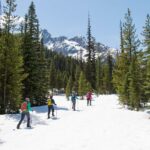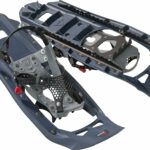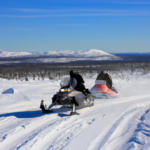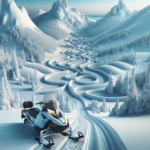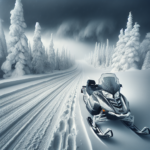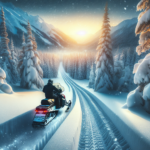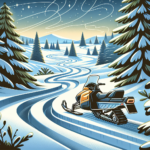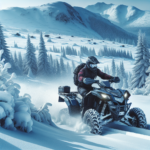Imagine you’re all geared up for a thrilling snowmobile ride on a chilly winter day, and right when you’re about to embark on your adventure, your snowmobile refuses to start. It’s disappointing, frustrating, and perplexing all at once. Don’t worry, you’re not alone in this predicament. In this article, we’ll demystify the potential reasons why your snowmobile wouldn’t start and provide effective solutions to get you back on the snowy trail in no time.
Understanding the Basic Operation of Snowmobiles
For you to effectively troubleshoot your snowmobile, it’s essential to first understand how it operates. Snowmobiles, like any engine-powered machinery, are a complex collection of interconnected parts and systems integral to its functioning.
Parts of a Snowmobile
Your snowmobile is made up of various parts, including the engine, exhaust, fuel system, ignition system, and electrical system, among others. Each of these components plays a pivotal role in ensuring your snowmobile operates as it should.
Basic Snowmobile Functions
A snowmobile, in its most simple form, uses an internal combustion engine to power the machine. The fuel in the tank flows to the engine via the fuel system and is mixed with air from the air intake system. The resulting mixture is ignited by a spark from the ignition system, creating an explosion that forces the pistons to move, ultimately generating power to move the snowmobile.
Roles of Various Parts in Starting the Snowmobile
Each part of the snowmobile has a unique role in starting. The ignition system, fuel system, and electrical system primarily ensure proper starting. In short, the battery sends electric current to the starter motor, which in turn cranks the engine. The ignition system provides the necessary spark to ignite the fuel-air mixture in the engine, which starts the engine.
Common Symptoms of a Non-Starting Snowmobile
Sometimes, despite your best efforts, your snowmobile might not start. There are several common symptoms you might encounter, each attributed to various underlying problems.
No Sound From the Engine
When you try to start your snowmobile, and there’s no sound from the engine, it may indicate a problem with the battery or the electrical system. An old battery, damaged wiring, or issues with the ignition switch are common culprits in such cases.
Engine Cranks But Doesn’t Start
If your snowmobile’s engine cranks but refuses to start, the problem could be with the fuel system, ignition system, or the engine’s compression. It indicates that the engine is not receiving the necessary spark, fuel, or air to run.
Sound of Backfire or Misfiring
Backfire or misfire when starting your snowmobile can signify a malfunctioning ignition system or problems in the engine’s timing. These problems can cause the fuel-air mixture in the cylinder to ignite at the wrong time, leading to these sounds.
Difficulty Starting in Extremely Cold Weather
Experiencing hard starts during cold weather is a common issue with snowmobiles. The culprit could be thickened engine oil, a weak battery, clogged carburetor, or problems with the choke system.
Checking the Ignition System
One of the primary systems to check when your snowmobile fails to start is the ignition system. This complex system is responsible for generating the spark that ignites the fuel-air mixture in the engine.
Inspecting the Spark Plugs
Whenever you’re dealing with a non-starting snowmobile, the first place to check is the spark plugs. A dirty or defective spark plug will not produce a strong enough spark to ignite the fuel-air mixture effectively.
Examining the Ignition Coils and Wires
The ignition coils and wires also play significant roles. Bad coils can interfere with the creation of a spark. Additionally, damaged wires can interrupt the electric current necessary for the spark to occur.
Checking for Proper Spark
To ascertain whether the spark is the problem, you will need to check for visual signs. This involves removing the spark plug, reattaching it to the spark plug wire, grounding it against the engine, and turning the engine over. You should see a strong, consistent spark if the ignition system is working correctly.
Examining the Fuel System
The fuel system, another critical part in starting a snowmobile, regulates the flow of fuel from the tank to the engine.
Checking for Clogged Fuel Lines
Fuel lines can occasionally become clogged, hindering the flow of fuel to the engine. This can occur due to impurities in the fuel or if the fuel has been in the tank for an extended period.
Inspecting the Carburetor
The carburetor plays a vital role in combing air and fuel into a vapor, which is then ignited in the combustion chamber. However, built-up residue can make the carburetor less effective over time.
Testing Fuel Pump Functionality
The fuel pump’s task is to transport fuel from the tank to the carburetor. A faulty fuel pump may not be up to this task, depriving the engine of the necessary fuel.
Looking at the Air Intake and Exhaust System
The air intake and exhaust system play pivotal roles in the proper operation of the snowmobile’s engine.
Identifying Problems in the Air Filter
The air filter’s role is to ensure only clean, debris-free air reaches the engine. Over time, the air filter may become dirty or clogged, restricting air flow to the engine.
Checking for Blockage in the Exhaust
A blocked exhaust system will fail to clear out the expended gases, thus hampering the engine’s performance and potentially causing it to fail to start.
Reviewing the Electrical System
The electrical system is responsible for powering all the electric components of your snowmobile.
Assessing the Battery Status
A dead battery is often the simplest explanation for why your snowmobile won’t start. It is always best to start your troubleshooting here by checking the battery status and ensuring it is fully charged.
Checking the Starter Motor and Relay
If your battery is fine, the next point of focus should be your starter motor and relay. The starter motor initiates the engine’s operation by creating mechanical energy and if it’s faulty, the engine won’t crank.
Inspecting Wires and Connectors
Bad wiring and connectors can cause complete loss of power to crucial components of your snowmobile. Check for loose connections, frayed wires, and signs of corrosion on connectors.
Checking the Compression System
The compression system in a snowmobile is responsible for compressing the fuel-air mixture in the cylinder, an essential step for the engine to run.
Understanding the Importance of Good Compression
Good compression is crucial for the engine’s efficient operation. Without proper compression, the combustion process will not create the required power to keep the engine running.
Running a Compression Test
A compression test involves measuring the pressure created during the compression stroke. This test will help you understand the overall condition of the components involved in the compression process.
Diagnosing Common Compression System Issues
Common compression issues are usually related to worn-out piston rings or gaskets, valve problems, or worn cylinder walls. These problems can lead to loss of compression, affecting the engine’s performance and making it hard or impossible to start.
Maintenance Tips to Prevent Starting Issues
Preventive maintenance is key to avoid common snowmobile starting issues. Here are some tips that can safeguard your snowmobile’s health.
Regular Inspection of Snowmobile Parts
Regularly inspecting your snowmobile’s parts, especially before the winter season, can help you spot potential problems before they become major issues. Pay special attention to the engine, carburetor, spark plugs, and fuel system.
Seasonal Maintenance Practices
Before the snowmobile season starts, conduct a comprehensive tuning of the machine. This includes cleaning and adjusting the carburetor, replacing the spark plugs, checking the battery, and oiling moving parts.
The Role of Proper Storage in Preventing Starting Problems
Proper storage of your snowmobile is vital when it’s not in use, especially during off-seasons. A well-ventilated, dry, and cool place is ideal. Also, remember to add fuel stabilizer to prevent the fuel from deteriorating.
When to Seek Professional Assistance
There are times when troubleshooting your snowmobile can be a complicated task, and professional help is required.
Common Red Flags for Professional Help
If your snowmobile still doesn’t start after checking the basic functionalities, or if you notice unfamiliar noises, leaks, or see smoke, it’s time to bring in a professional.
Choosing a Qualified Snowmobile Repair Service
When choosing a professional snowmobile repair service, consider their certification, experience, reputation, and cost of service to ensure quality and dependable assistance.
Understanding the Costs of Snowmobile Repair
Understanding the costs associated with snowmobile repair can prevent headaches down the line. Always request a quote for the services you need, and consider ongoing maintenance costs as well.
Getting Your Snowmobile Started: Troubleshooting Guide
Understanding and identifying problems with your snowmobile’s starting mechanism can be a challenging task. However, it becomes much easier when you have a systematic approach to troubleshooting.
Step-by-step Guide to Identifying Issues
When facing trouble with your snowmobile, follow a systematic troubleshooting guide. Always start with the most likely candidates for starting issues, such as the battery, spark plugs, and fuel lines, then move on to the less obvious ones.
Common Solutions to Starting Problems
Common solutions to starting issues include replacing the spark plugs, cleaning or replacing the air filter, unclogging the fuel lines, recharging or swapping the battery, or servicing the carburetor.
Safety Precautions During Troubleshooting
As always, safety should be your primary concern. Always wear protective gear when working on your snowmobile. Take care when dealing with flammable components such as fuel, and make sure to disconnect the battery before working on the electrical system.
In conclusion, a range of issues can prevent your snowmobile from starting. Having a basic understanding of the components and their functioning can help you identify and rectify many common problems. If all else fails, don’t hesitate to seek professional help. Keeping your snowmobile well-maintained and stored properly when not in use will also help prevent many of these issues from occurring in the first place.
- What Snowboard Bindings Should I Get? - January 23, 2024
- What Size Screws For Snowboard Bindings? - January 23, 2024
- How To Snowmobile On Water? - January 23, 2024

